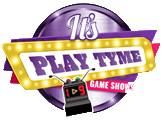As a business owner or manager, you want your employees to be motivated, productive, and engaged.
One effective way to achieve this is by designing an employee incentive program that rewards excellent performance and encourages continuous growth.
When designed correctly, these programs can have a significant impact on your organization’s overall success.
To design an effective employee incentive program that meets your company’s unique needs, you need to understand the key elements and strategies involved in the process.
In this section, we will explore everything you need to know to ensure your incentive program is a success.

Diversity-and-inclusion
Motivate Like a Pro: Design Effective Employee Incentive Programs
Key Takeaways:
- Employee incentive programs can boost productivity, motivation, and workplace morale.
- Designing an effective incentive program requires careful planning and understanding of your company’s goals and objectives.
- Performance metrics should be clearly defined and tailored to individual needs for maximum impact.
- Communication and transparency are essential in implementing a successful incentive program.
- Regular evaluation and adjustment of the program based on feedback is necessary for long-term effectiveness.
Understanding the Importance of Employee Incentives
Before you begin designing your employee incentive program, it’s important to understand why employee incentives are crucial to the success of your business.
By using effective employee motivation techniques, you can boost productivity and create a positive work environment that encourages employee engagement and loyalty.
Here are some best practices for employee incentives:
- Align incentives with business objectives: Your employee incentives should be aligned with your company’s goals and objectives to ensure that your team is working towards the same targets.
By doing so, you can ensure that your incentives program is driving the right behaviors and outcomes. - Keep it simple: Overcomplicating your incentives program can lead to confusion and frustration among your employees.
Keep your program straightforward and easy to understand to ensure that everyone knows what they are working towards. - Offer a range of incentives: Not all employees are motivated by the same rewards.
Offering a range of incentives, such as bonuses, time off, and recognition programs, can appeal to a broader range of personality types and preferences. - Celebrate achievements: Recognizing and celebrating your employees’ achievements is a powerful motivator that can boost morale and foster a positive work environment.
Whether it’s through public recognition or private praise, showing appreciation for your team members‘ hard work can go a long way. - Stay flexible: Incentive programs that are too rigid can be demotivating for employees.
Stay flexible and open to feedback so that you can adjust your incentives program as needed to ensure that it is always meeting the needs of your team and driving results.
By understanding the importance of employee incentives and following these best practices, you can create an effective rewards program that motivates your team and drives success for your business.
Setting Goals and Objectives
Designing an effective employee incentive program requires a clear understanding of your company’s goals and objectives.
Without a defined plan, you may find it challenging to implement a successful rewards program.
Here are some steps you can follow to ensure that your incentive program aligns with your company’s objectives:
1. Define Your Objectives
The first step in implementing a successful incentive program is defining your company’s objectives.
Ask yourself questions such as: What behaviors do you want to encourage?
What outcomes do you want to achieve? Do you want to increase sales, improve customer service, or boost employee productivity?
Once you know what you want to achieve, you can start designing rewards that will motivate your employees to achieve those goals.
2. Identify Key Behaviors
Next, you’ll need to identify the key behaviors that will lead to achieving your company’s objectives.
For example, if you want to increase sales, you might incentivize your sales team to close more deals.
If you want to improve customer service, you might incentivize your customer service team to resolve customer complaints faster.
By identifying the specific behaviors you want to encourage, you can design rewards that will motivate your employees to engage in those behaviors.
3. Choose Your Incentives
Once you’ve identified the behaviors you want to reward, you can start designing your incentives.
Your incentives should be tailored to your employees’ needs and preferences.
Consider what would motivate your team members – is it a cash bonus, extra vacation time, or a gift card to their favorite restaurant?
Keep in mind that not all incentives have to be monetary. Sometimes, recognition and a simple “thank you” can go a long way in motivating employees.
4. Communicate Your Program
Effective communication is key to the success of your incentive program.
Before launching your program, be sure to communicate the details to your employees.
Explain the objectives, the behaviors being incentivized, and the rewards being offered.
Ensure that your employees understand how the program works and the benefits they can receive. This will increase participation and engagement, leading to a more successful program.
5. Monitor and Adjust Your Program
A successful incentive program is an ongoing process.
Once your program is launched, you’ll need to monitor its effectiveness and make adjustments as necessary.
Monitor the behaviors being incentivized and track progress towards your company’s objectives.
Adjust your program as needed to ensure it continues to motivate and engage your employees.

Identifying Performance Metrics
Designing an effective employee incentive program involves identifying performance metrics that align with your company’s objectives.
By doing so, you can create a program that motivates your employees and drives results. Here are some tips for designing performance-based incentive programs:
- Set measurable goals: Clearly define what you want to achieve with your incentive program. Set specific, measurable, achievable, relevant, and time-bound (SMART) goals that align with your company’s objectives.
For example, if your goal is to increase sales, then your performance metrics could be the number of sales made or the revenue generated. - Involve employees in setting goals: Consider involving your employees in setting performance goals. Doing so can help them feel more engaged and motivated to achieve these goals.
You can also seek feedback from your employees on what incentives would be most meaningful to them. - Choose relevant metrics: Select performance metrics that are relevant to your employees’ jobs and can be directly impacted by their efforts.
For example, if you are incentivizing customer satisfaction, then consider using metrics like customer retention rates or survey results.

“Setting clear and measurable performance metrics is essential for creating effective employee incentive programs that drive results.”
When designing your performance metrics, it’s important to keep in mind that different employees may respond better to different incentives.
Consider tailoring your program to meet the individual needs and preferences of your team members.
Successful Employee Incentive Strategies
Successful employee incentive programs are those that are designed with the company’s objectives in mind and that motivate employees to achieve those objectives. Here are some strategies to consider:
- Offer a variety of incentives: Consider offering a mix of incentives that appeal to different employees.
For example, some employees may be motivated by monetary rewards, while others may prefer non-monetary rewards like extra time off or public recognition. - Provide frequent feedback: Providing employees with frequent feedback on their performance can help keep them engaged and motivated.
Consider implementing regular performance reviews or setting up a system for ongoing feedback. - Make incentives achievable: Incentives should be achievable within a reasonable timeframe.
If goals are set too high, employees may become discouraged and feel that the program is unfair or unattainable.
By following these strategies and designing your performance metrics with care, you can create an effective employee incentive program that motivates your employees and drives results.
Got Team Building Games?
![]()
Book a live game show experience today!
Contact us for further details.
For Immediate assistance by text – 917-670-4689
No deposit required. 5-Star Google Rated
We plan and facilitate all activities.
Tailoring Incentives to Individual Needs
One of the biggest mistakes employers make when designing an employee incentive program is assuming that all employees are motivated by the same rewards.
The truth is, everyone has different needs and preferences when it comes to recognition and rewards.
To ensure that your incentive program is effective, it’s essential to tailor rewards to meet the individual needs of your team members.
This doesn’t necessarily mean creating a unique rewards program for each employee, but rather offering a variety of rewards that cater to different interests and motivations.
Employee Recognition Ideas
Here are some creative employee recognition ideas that can be personalized to meet individual needs:
- Personalized Perks: Offer employees the opportunity to design their own workstations or choose their preferred office decor. This can go a long way in making employees feel valued and appreciated.
- Flexible Schedules: Some employees may value flexible work schedules over monetary rewards. Consider offering flextime or remote work options as incentives for achieving certain goals.
- Professional Development Opportunities: Many employees are motivated by opportunities for growth and development. Offer training sessions, conferences, or mentorship programs as incentives for exceptional performance.
- Gift Cards or Experiences: Gift cards or experiences to restaurants, sporting events, or concerts can be a fun and appreciated reward for hitting targets.
Effective Incentive Program Strategies
To ensure your employee incentive program is successful, keep these strategies in mind:
- Get to Know Your Employees: Conduct surveys or hold focus groups to get a better understanding of what motivates your team members.
- Communicate the Program: Ensure that all employees are aware of the incentive program, how it works, and what rewards are available.
- Make It Achievable: Set realistic and achievable goals to avoid discouraging employees. Break larger goals down into smaller milestones, and celebrate each success along the way.
- Track Progress: Use a tracking system to monitor progress and provide regular updates to employees.
By tailoring your employee incentive program to meet individual needs and following effective incentive program strategies, you can boost motivation and productivity while fostering a culture of appreciation and recognition.

Communication and Transparency
Effective communication is essential when it comes to designing and implementing an employee incentive program.
Transparency is equally important, as it helps build trust and fosters a positive work environment.
Before launching your program, make sure to communicate the details to your employees.
Explain the objectives of the program, the criteria for rewards, and how performance will be measured.
Provide your team with clear guidelines and expectations so that they can work towards achieving their goals.
Transparency is key throughout the incentive program implementation process. Keep your employees informed about their progress and the progress of the program as a whole.
Share updates on important metrics and any changes or adjustments made to the program.

Regularly check in with your team to ensure that they understand the program and the rewards they can earn.
Encourage feedback and questions, and be open to suggestions on ways to improve the program.
Remember that a successful incentive program requires a collaborative effort between management and employees.
By prioritizing communication and transparency throughout the incentive program design process, you can ensure that your employees feel valued, supported, and motivated to achieve their goals.
Providing Frequent and Timely Feedback

Team-building-facilitator
To keep your employees engaged and motivated, providing frequent and timely feedback is crucial.
Employees need to know how they are performing, what they are doing well, and what areas they can improve on.
Implementing effective employee motivation techniques and best practices for employee incentives is vital in maintaining a productive and motivated team.
Tip: When providing feedback, be specific and objective. Use examples to illustrate your points and avoid generalizations or personal attacks.
Regular feedback sessions can also help to identify any potential issues before they become significant problems.
By providing employees with the opportunity to share their thoughts and concerns, you can foster a positive work environment built on trust and transparency.
One way to provide feedback is through performance evaluations. These evaluations can help you assess your employees’ strengths and weaknesses, set goals for improvement, and provide constructive feedback.
Additionally, recognition and rewards can serve as a form of feedback. Praising your employees for a job well done can help boost morale and keep employees motivated.
Consider implementing a formal employee recognition program as part of your incentive program strategy.
Overall, providing frequent and timely feedback is a critical component of an effective employee incentive program.
By using employee motivation techniques and best practices for employee incentives, you can help your team members feel valued and motivated to perform at their best.
Evaluating and Adjusting Your Program
To ensure that your incentive program remains effective, it is important to regularly evaluate and make necessary adjustments.
Evaluating your program allows you to identify areas for improvement and make changes that will help to increase employee engagement and motivation.
When evaluating your program, consider the following:
- Are your goals and objectives clear and aligned with your company’s vision and mission?
- Are your performance metrics relevant and accurately measuring employee performance?
- Is the program being communicated effectively to all employees?
- Are there any obstacles or challenges that are preventing employees from participating in the program?
Based on your evaluation, make adjustments to your program as needed. This may include changing the rewards offered, refining performance metrics, or improving communication strategies.
Remember, an effective incentive program is one that is constantly evolving and adapting to meet the changing needs of your employees and your organization.
Example: Adjusting the Rewards
Let’s say you have been offering gift cards as a reward for meeting certain performance metrics, but you notice that some employees are not as motivated by this reward as others.
To improve participation in the program, you may consider offering a wider range of rewards that cater to the individual needs and preferences of your employees.
For instance, some employees may prefer additional time off work or a more flexible work schedule, while others may be motivated by public recognition or opportunity for career advancement.
By adjusting your rewards and offering a variety of options, you can increase employee engagement and motivation, and ultimately create a more effective incentive program.

Recognizing and Rewarding Achievements
Recognizing and rewarding your employees’ achievements is crucial to the success of your employee incentive program.
By doing so, you create a culture of positivity, motivation, and overall job satisfaction. Here are some employee recognition ideas to consider:
- Public acknowledgement: Recognize outstanding performance in front of the entire team.
This can be done through a company-wide email, a shoutout during a meeting, or a bulletin board in the break room. - Personalized rewards: Show your appreciation for your employees by giving them rewards that align with their interests.
For example, if an employee is an avid coffee drinker, consider giving them a gift card to their favorite coffee shop. - Monetary rewards: While not the only way to reward employees, monetary rewards can be a powerful motivator.
Consider offering bonuses, commission, or profit-sharing opportunities to employees who exceed their performance goals. - Employee of the month program: Create an employee of the month program to publicly recognize and reward the top performer each month.
This program can incentivize healthy competition and foster a positive work environment. - Extra time off: Reward top performers with an extra day off or half-day.
This can be a great way to show your appreciation while also giving employees a much-needed break.
Remember, when it comes to recognizing and rewarding achievements, it’s important to be consistent and fair.
Make sure your rewards program is transparent, and that everyone has an equal opportunity to be recognized for their hard work and dedication.
Nurturing a Culture of Appreciation
As you design an effective employee incentive program, it’s important to create a work environment where recognition and appreciation are valued. Here are some effective strategies for showing gratitude to your employees:
Employee Recognition Ideas

happy-work-anniversary
Implement a structured recognition program where employees are recognized for their achievements.
This could be an employee of the month award, a peer-nominated recognition program, or even a simple shout-out at a team meeting.
Encourage peer-to-peer recognition by providing opportunities for employees to acknowledge and appreciate their colleagues’ contributions.
Effective Incentive Program Strategies
Include recognition and appreciation as an integral part of your incentive program. Make sure to celebrate both individual and team successes.
Provide personalized rewards that show your employees that you value their unique contributions.
This could be anything from a gift card to their favorite restaurant or tickets to a sporting event they enjoy.
Remember, fostering a culture of appreciation and recognition is a long-term effort.
Consistently show your employees that their hard work and dedication are valued and appreciated, and you’ll see a positive impact on morale and productivity.
Frequently Asked Questions

frequently asked questions
How can I design an effective employee incentive program?
To design an effective employee incentive program, you need to:
- set clear goals and objectives,
- identify relevant performance metrics,
- tailor incentives to individual needs,
- communicate transparently,
- provide frequent and timely feedback,
- evaluate and adjust the program,
- recognize and reward achievements.
Why are employee incentives important?
Employee incentives are important because they motivate employees, boost productivity, and enhance workplace morale.
By implementing effective incentive programs, you can increase employee satisfaction and ultimately drive better results for your organization.
How do I set goals and objectives for my incentive program?
Setting goals and objectives for your employee incentive program involves aligning rewards with your company’s objectives, determining the desired outcomes, and defining measurable performance metrics.
By doing so, you can ensure that your incentives are meaningful and drive the desired behaviors.
How do I identify relevant performance metrics for my incentive program?
When designing a performance-based incentive program, it’s important to identify performance metrics that directly correlate with your employees’ job responsibilities and the desired outcomes.
This could include metrics such as sales targets, customer satisfaction scores, productivity levels, or any other key performance indicators that align with your organization’s goals.
How can I tailor incentives to meet individual needs?
Not all employees are motivated by the same incentives. To tailor your incentive program to meet individual needs, consider conducting employee surveys or interviews to understand their preferences and interests.
This will help you create a personalized rewards system that resonates with each team member.
Why is communication and transparency important in implementing an incentive program?
Communication and transparency are vital in ensuring the success of an employee incentive program.
Keeping employees informed about program details, eligibility requirements, and reward criteria helps build trust and understanding.
It also allows employees to see the value in their efforts and fosters a positive work environment.
How do I provide frequent and timely feedback to motivate employees?
Providing frequent and timely feedback is crucial in motivating employees.
Regularly recognize and acknowledge their achievements, address areas for improvement constructively, and offer support and guidance.
By doing so, you create a culture of continuous improvement and show your employees that their work is valued.
How can I evaluate and adjust my incentive program?
To ensure the long-term effectiveness of your employee incentive program, regularly evaluate its success.
Gather feedback from employees, measure the impact of incentives on performance metrics, and make necessary adjustments based on the results.
This iterative process will help you continuously improve and optimize your program.
How do I recognize and reward achievements?
Recognizing and rewarding achievements is a powerful motivator.
You can do this by publicly acknowledging employees’ accomplishments:
- offering tangible rewards such as bonuses or gift cards
- providing opportunities for career growth
- giving additional responsibilities,
- organizing team celebrations or events.
Tailor the recognition to each individual’s preferences to make it more meaningful.
How do I foster a culture of appreciation within my organization?
To foster a culture of appreciation, regularly show gratitude to your employees.
This can be done through verbal appreciation, written notes, public recognition, or small gestures like surprise treats or team outings.
Encourage a supportive environment where recognition and appreciation are valued and encouraged among colleagues.





